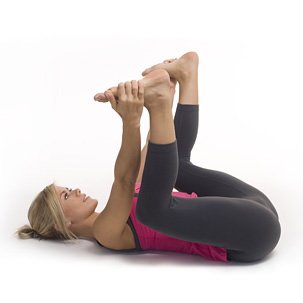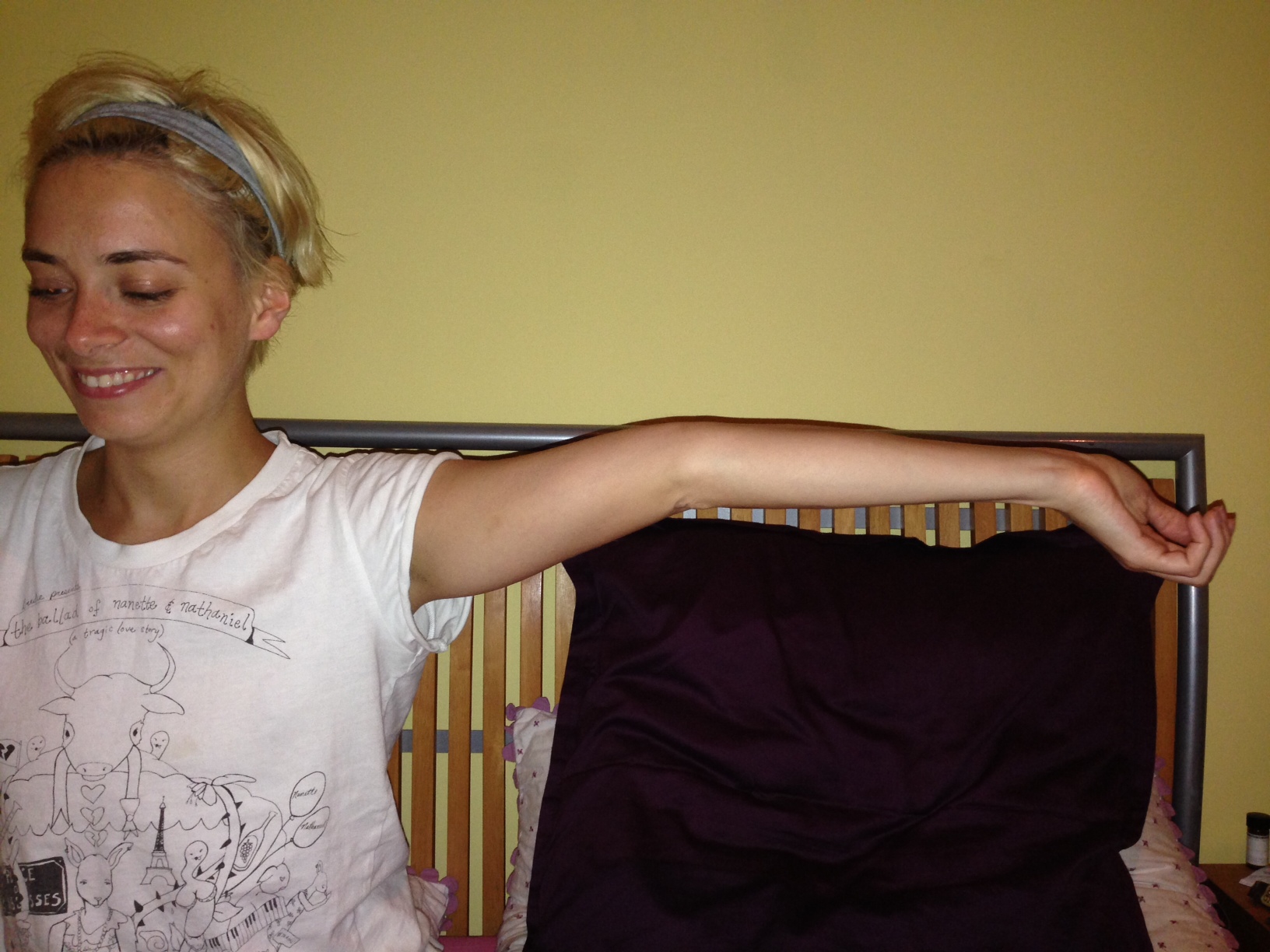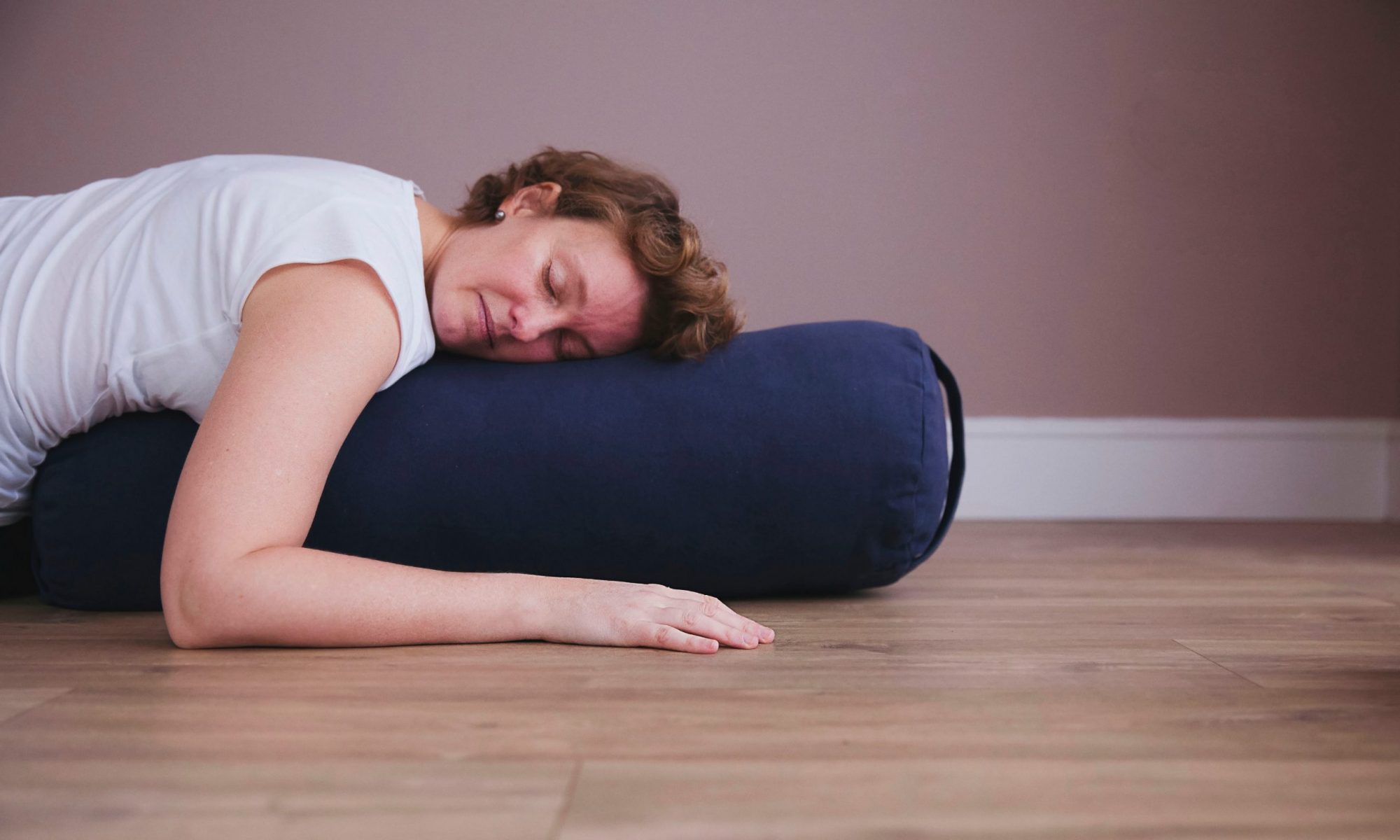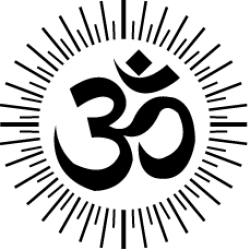Last weekend I taught a yin workshop at BAYoga Studio in Berkhamsted. We did happy baby pose and I suggested to students that they took hold of the inside of the soles of their feet, allowing their knees to relax towards their armpits.

Afterwards, a friend in the class mentioned that it feels much better for her to take hold of the outsides of her feet. Holding the insides made her shoulders and chest feel restricted. “That’s odd”, I thought. Trying it at home, my shoulders and chest felt open, no problem. And then I thought about my hips. I have very open hips so my knees are wide enough apart to allow for my shoulders to relax in the space between my knees. Her hips aren’t quite as open as mine and so by holding the outsides of her feet, her chest broadens and she feels the benefits of the pose.
This got me thinking about different people’s bodies and how we approach poses. Not too long ago, someone asked me whether I could get my heels down to the mat in down facing dog. I said yes and they looked amazed. But is that due to having super stretchy hamstrings or just because of the way I’m built?
Perhaps my hamstrings have lengthened somewhat through practice, but getting my heels to the floor has never been hard. It’s surely got more to do with the fact that that I have a wide range of movement in my ankle joint due to the shape of my bones.
Likewise, I’m restricted in movement in my wrists. When I stretch my hand backwards, it hardly comes back. So when I try to do handstands, I need to place the edge of a cushion or a wedge between the heel of my hand and the floor to lessen the angle and pressure on my wrists.

Take my sister’s elbows as another example. She hyperextends through her elbows meaning that when she stretches her arm out, palm facing up, her elbows bends beyond 180 degrees. There’s no pain, it’s just how she’s made. When she practices yoga, some of her poses might look a bit odd. Ok, so she may never make it into a book of beautiful yoga poses (sorry Katharine, I still love you), but it works for her.
It’s just how we’re built and we need to work with the body and bone shape we’ve been given. We might feel a need to strive to create the ‘perfect’ pose, but for many of us, our bodies can’t do certain things because of ‘compression’ i.e. the range of movement we can achieve due to the shape of our bones and also how they meet at joints.
Regardless of how many hours of practice we put in, we can’t change this. It doesn’t mean that her pose is ‘better’ than yours, it’s just different and yoga teaches you about gratitude and acceptance: accepting where you are in your practice and more broadly who you are as a person.
If this sort of thing interests you, check out Paul Grilley. He talks a lot about anatomy. His DVD ‘Anatomy for Yoga’ is rather good too.


